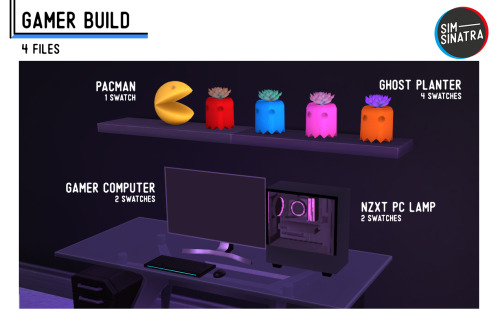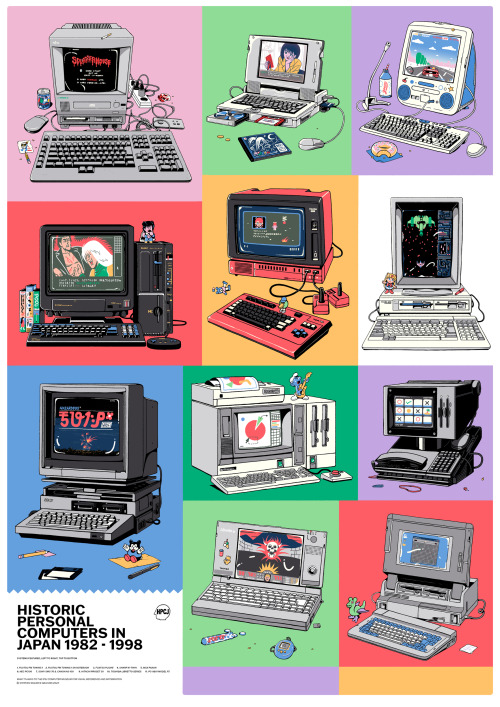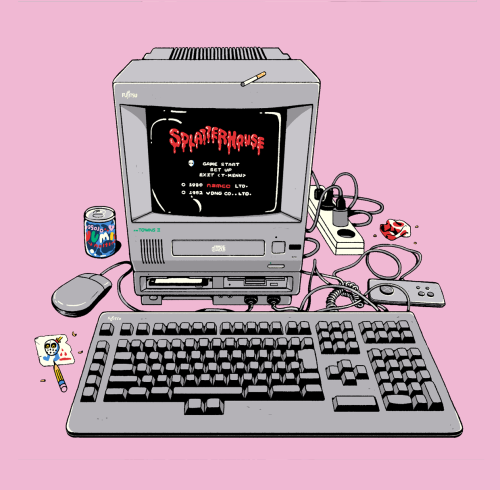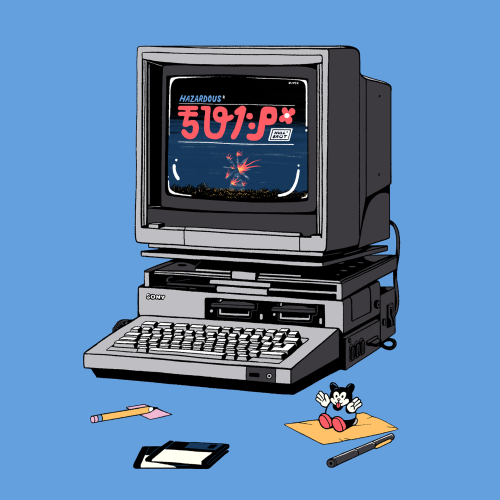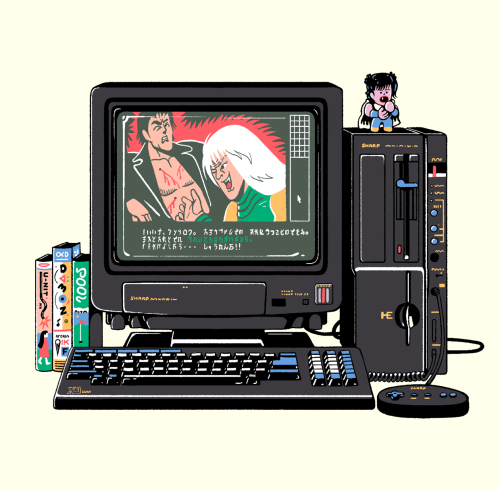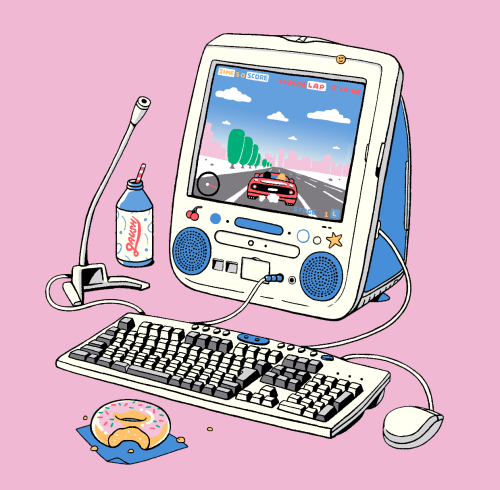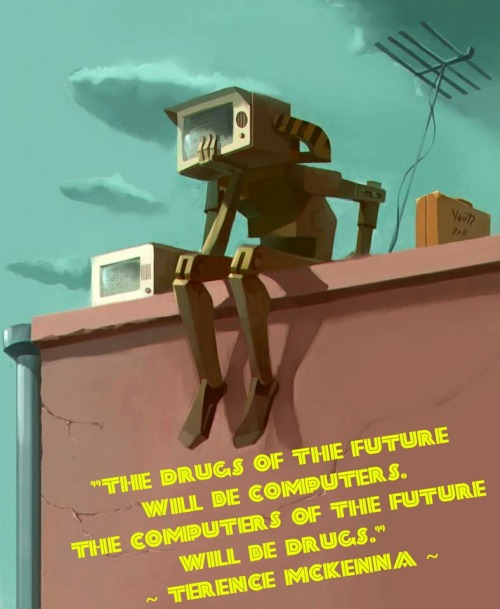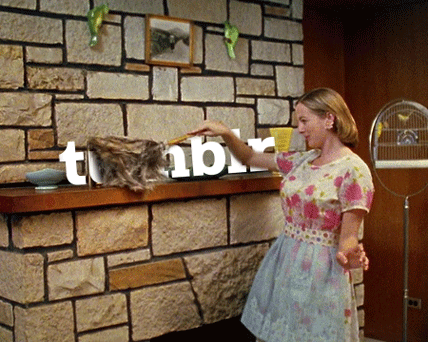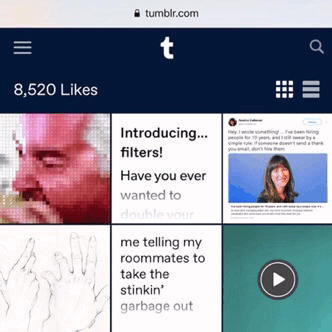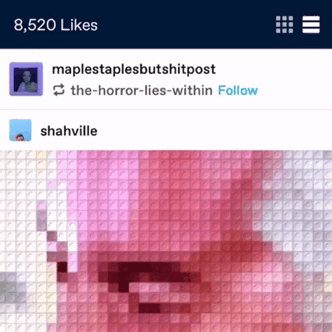#computer
Out of my way. I’ve got exams to deal with.
Gamer Build
4 files. Base game compatible.
Hi everyone. I’m very excited to share with you… a lamp! It has a shape of a NZXT pc but you can actually change the color of the light like any lamp. Also you can put it together with my Monitor (which is the real computer). Lastly, the pacman figure can be found in the misc. section in decoration.
Download without ads ↓
Post link
I made a big poster full of historic Personal Computers from Japan, its available from my shop (linked below) should you want to pick up a print :)
Post link
Outside
Short video by Vladimir Tomin is a series of sketches imagining the real world manipulated through PC desktop software interfaces:
So that’s what it feels like to go outside
Post link
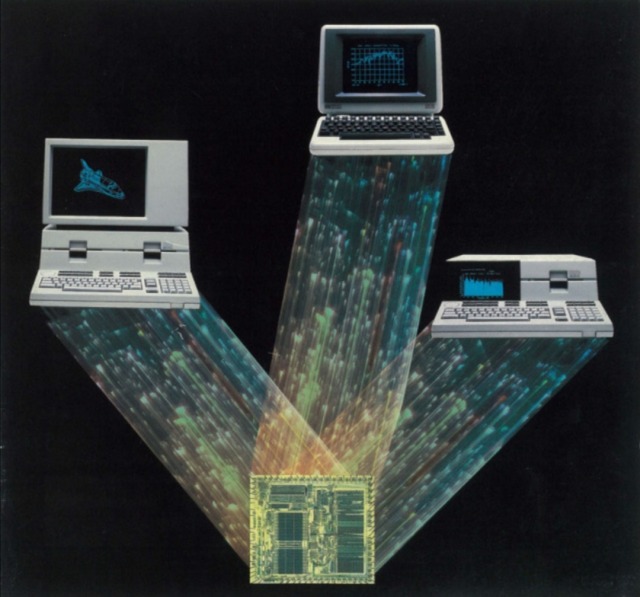
HP. HEWLETT. PACKARD. (1983)
downloading smiley central
Dusting off the cobwebs
Over the past couple of weeks, we have slowly rolled out a spiffy new version of Tumblr on the web. Here’s a smattering of goodies in the update:
- Dark mode is now available on the web! Along with a few other color schemes, too. Just click the silhouette figure in the upper right corner and then click “Change Palette” to cycle through all of ‘em.
- You can now view your likes page in the default view or in the new grid view.
- Same with any tagged pages. Here, try it out with the frog tag. A glorious grid.
- Copying the link to a post, reporting a post, or blocking someone whose content you don’t enjoy is easier than ever. Just click the meatballs menu (●●●) in the upper right corner.
Some of these visual changes are obvious, but the biggest transformation is the one you can’t see. This wasn’t just a facelift, we completely updated the web interface. The old one was outdated—over a decade old. Adding features to it wasn’t always easy, fixing bugs wasn’t always quick. It was clear that we needed to update the whole dang thing. So update the whole dang thing we did. The result? A faster Tumblr. The experience is smoother, it’s easier to add new features, and we’re able to squash any pesky bugs quicker than before.
XKit
This kind of web interface change means that some of your Tumblr browser extensions may not work. We understand how important these extensions are to those of you who want to customize your Tumblr experience as much as possible. Throughout this process, we’ve stayed in close communication with the people over at @new-xkit-extension to make sure our update was one that they could work with. We provided them with APIs they needed to begin moving over to this new platform. This also gave us the opportunity to discuss the benefits their extension brings to the community. Having their input on what makes their service valuable to the people who use it has been a true treat, and one we are grateful for. While XKit isn’t an official Tumblr tool, it’s one we know is dear to many of you, and we don’t take that lightly. If you have any concerns, we encourage you to read more about what they have to say over here. Be sure to follow them to stay updated on their process!
We want to hear from you
Yeah, you. When we first began testing this new interface with a small selection of you, we received some really useful feedback. We want to make sure that continues, so we created a survey. While we always read the reblogs on our announcement posts, this survey is the best way to let us know exactly how you feel about this update. And don’t worry—it’s anonymous. We won’t know who you are unless you make it your business to tell us so. Head on over there and share your thoughts now.
Hey! Look at that! We changed the website.
Post link
✨✨
Hi there! Your friendly neighborhood Tumblr web developer here. You may have recently noticed that we’re making some changesaround the site. Some of you might have even gotten the chance to play around with a beta version of our site on desktop. We may be biased, but we think it’s pretty neat!
However, we know that a lot of you don’t just use Tumblr—especially on your non-mobile devices. You use Tumblr and something. Tumblr and XKit, Tumblr and Tumblr Savior, Tumblr and all kinds of things, all of them made and maintained by passionate Tumblr users. We don’t want that to go away when we roll out the new changes to everybody.
We’ll be rolling out these changes within the next couple of months, aiming to be fully out by the end of March. So, consider this an olive branch–we don’t want this to surprise anyone, and we want to help everyone be ready.
Some of you are already digging into the beta site, poking at its gears, and trying to make it play along nicely with browser extensions. We want to make that at least somewhat easier. We’ve already built in one hook that lets you access consistent and meaningful CSS class names. Hopefully, that’s enough to enable some DOM manipulation and restyling. You can take a look at some documentation for it here.

It might not be enough for everything, though. If it’s not, we want to know. You can let us know via this very blog if you wish. Or drop by our docs on Github and leave an issue. We can’t make any guarantees, except that we’re listening.
All the best,
The Core Web Team @ Tumblr
Hi! You may have noticed recently that blog archives look a little different. Spruced up a bit: smoother, faster, fancier. Squarer! You can mix and match filters in a way you never could before. Go ahead! Pick a month anda post type. You deserve it!
You can even filter the archive by tag now.
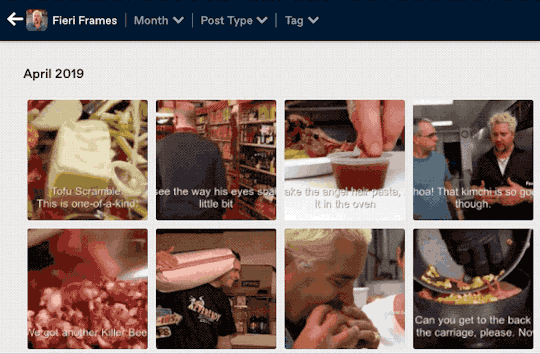
It’s pretty good! And it’s all possible because the archive has joined the honored ranks of pages running on our new web stack, just like the mobile web dashboard.
And we’re not stopping here! As Tina Turner once said, big wheel keep on turnin’. Come be a part of that wheel.
- Robbie Dawson (@idiot)
Post link
Making a progressive web app with webpack just got a little bit easier
Today we are releasing webpack-web-app-manifest-plugin, which generates an app manifest that shows up in your assets manifest.

I heard you like manifests
Turns out, there are a lot of web things called “manifests”. When talking about web app manifests and assets manifests, sometimes it’s hard to keep track. Buckle up, because we made a webpack plugin that deals with both of these types of manifests.
Web app manifests are JSON files that allow your application to specify the way it should be treated when installed as an application on a mobile device. You may want to specify what the application name and icon should be. Maybe you want to tell the browser to tint some of its UI elements to match the color scheme of your page, or even hide the browser chrome entirely. You can do all of that with a web app manifest.
Assets manifests are JSON files that contain paths to assets that are generated by webpack. They’re generated by plugins such as assets-webpack-plugin. If you add hashes to the end of your filenames to allow cache busting, assets manifests can be very useful. For example, we use our assets manifest to add JavaScript and CSS files to our <script> and <link> tags.
So I put a manifest in your manifest
While we were building our web app manifest, we wanted to be able to add a hash to the file path and <link> to it. So we needed to add it to our assets manifest. Unfortunately, we were unable to find any existing open-source plugins that output the file in the correct way to add it to the app manifest. So, we built webpack-web-app-manifest-plugin.
By default, webpack-web-app-manifest-plugin assumes that you will name your icon files in the format manifest/icon_[square dimension].(png|jpeg|jpg). If you name them using that scheme, you can use this plugin just like this:
// in your webpack config
importAppManifestPluginfrom‘webpack-web-app-manifest-plugin’;
…
plugins:[
newAppManifestPlugin({
content:{
name:'Tumblr’,
short_name:'Tumblr’,
background_color:’#36465d’,
},
destination:’/manifest’,
}),
],
…
// in your page template
constmanifest= // however you usually access your asset manifest in code
constappManifestPath=manifest['app-manifest’].json;
<linkrel=“manifest”href={appManifestPath} />
If you named your icons with some other naming scheme, you can still add them to the web app manifest, it’s just a little more work. That process is detailed in the README.
Please use it
We’re really proud of the work we’ve done to make web app manifests compatible with asset manifests, which is why we’ve decided to open source it and publish it on npm. Please use it.
If this plugin doesn’t meet your needs, we welcome pull requests. And if you have a passion for progressive web applications, webpack, and open source, join our team!
- Paul Rehkugler (@blistering-pree)
A Breath of Life: Welcome the Brand New Mobile Web Dashboard
We rebuilt another piece of the site with React

Background
A few months ago my colleague Robbie wrote a post about how the Core Web team is introducing a new web stack built on Docker, Node, and React. It is a beautiful vision, but we had only launched one tiny page on that infrastructure. This spring, we used that new stack to rebuild the mobile web dashboard from the ground up. And then we launched it.
Why we did it
We decided on building the mobile dashboard next for a few reasons. First, the dashboard is one of the most important parts of Tumblr—for many people it is their primary window into the content here. Because of that, most things that we develop inevitably touch the dashboard. It was time to raise the stakes.
The desktop dashboard and the mobile apps have been moving forward at a blistering pace, but have you seen the mobile web dashboard? It was stuck in 2015. Nobody ever made features for it because it was a completely separate codebase. We avoided that issue with the rewrite. Since the new version we’re building is responsive, our new mobile web dashboard will eventually also power the desktop web dashboard experience. This’ll make it much easier to maintain feature parity between the desktop and mobile web experiences.
Finally, we wanted to make something a little bit more complex than the image page, and the mobile web dashboard seemed like a good next step. It allowed us to start making authenticated API calls and figuring out how to pass cookies through our new server to and from our API; to think about laying the groundwork for a totally responsive dashboard, so we can eventually launch this for the desktop; to make a testing ground for progressive web app features like web app manifests; to start rendering posts that are backed by the new post format; and to figure out how to slowly roll out the new stack to a consistent, small set of users. We also had a pretty bad performance bug and learned a whole lot about profiling Node. (We plan on writing more in-depth posts about some of these topics soon.)
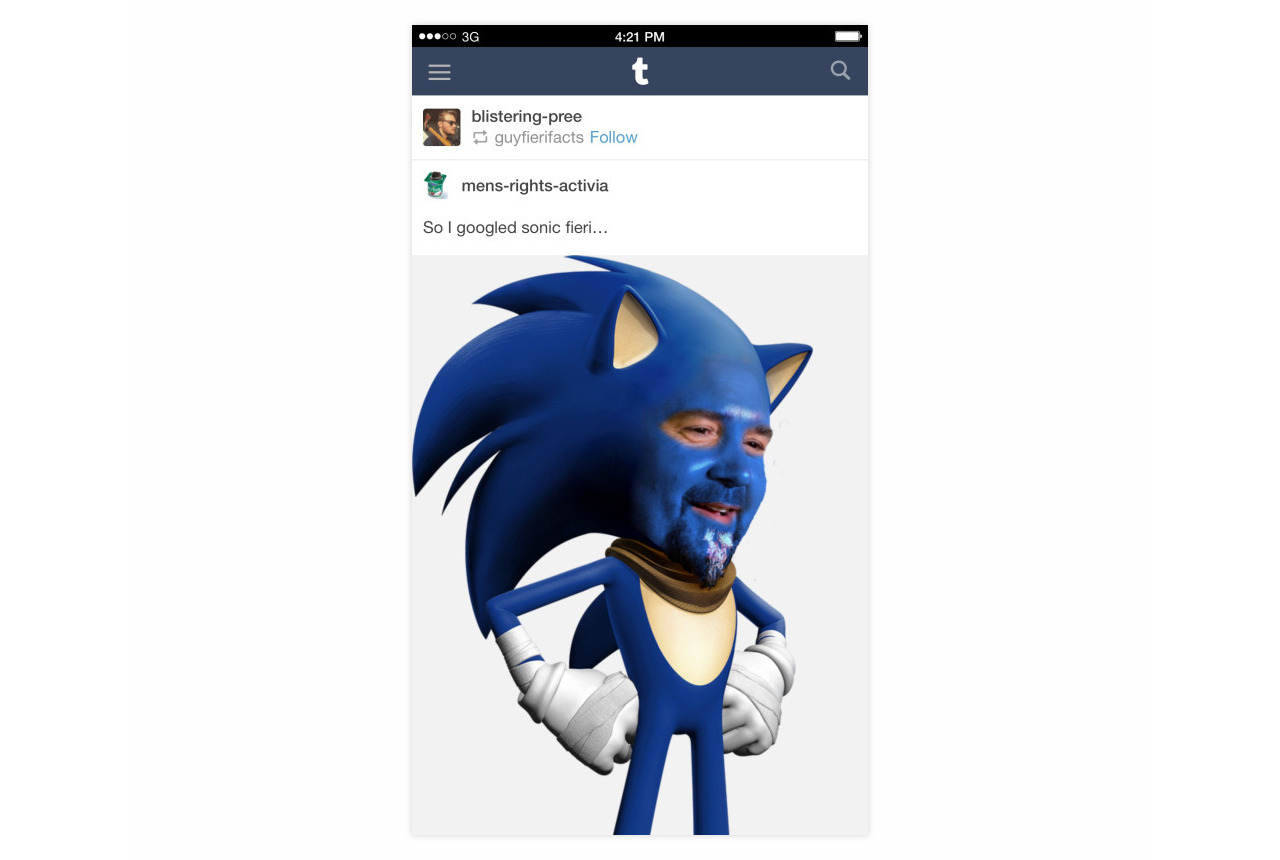
It is good
And the rewrite turned out really well. Even with more features like pull-to-refresh, a new activity popover, and modern audio and video players, we sped up our DOM content loaded time by 35%! The new page has a lot of modern web standards in it too like srcsets, flexbox, asynchronous bundle loading, and a web app manifest. You can install the mobile web dashboard as a standalone app now. It was also way faster and simpler to write using React than it was on our old PHP/Backbone stack.
We’re really proud of the new mobile web dashboard. We look forward to bringing even more new features to it in the near future, and launching even more pages on our new web infrastructure.
If you think this is cool too, come work with us!
– Paul Rehkugler (@blistering-pree)
In the ten years that Tumblr’s been around, a lot has changed in web technology. We’ve kept up, of course, but it’s always been a process of addition, layering one new technology on top of another. And what we were working with—a custom framework built on top of Backbone, messily entangled with a PHP backend and its associated templates—was becoming unmanageable. Our piecemeal conversions to new technologies meant we had thousands of ways posts were rendered (only a moderate exaggeration). And each of those had to be updated individually to support new features or design changes.
It was time to step back, survey the world of web technology, and clean house in a big way. That we could finally test some of the new tech we’ve been itching to use was just a little bonus.
We started by laying out our goals:
- A web client codebase fully separated from the PHP codebase that gets its data from the API in the same way our mobile apps do
- A development environment that’s as painless as possible
- Dramatically improved performance
- Isomorphic rendering
- Robust testing tools
- Built on a framework with a healthy and active community, with some critical mass of adoption
With those goals in mind, we spent the beginning of the year on research - figuring out what kinds of things people were building web apps with these days, tooling around with them ourselves, and trying to assess if they would be right for Tumblr. We landed, eventually, on React, with a Node server (running Express) to make isomorphism as easy as possible. On top of that, we’re using Cosmos for developing components, React Router for routing, and TypeScript to make our lives better in general. (My colleague Paul already wrote about what went into our decision to use TypeScript here.)
As if writing an entirely new stack wasn’t enough, we realized along the way that this was our perfect chance to start deploying containerized applications with Kubernetes, a first for Tumblr. We had never previously deployed a node application to production here, and didn’t have the infrastructure for it, so it was a perfect green field on which to build another new and exciting thing. There’ll be more to come later on Kubernetes.
So where are we now? Well, we’ve launched one page powered by this new app - image pages, like this - with more to come very soon.

Though it may seem simple, there’s a whole new technological world between you clicking that link and seeing that page. There’s a ton more exciting stuff happening now and still to happen in the future, and we’re looking forward to sharing it here. Wanna get in on the action yourself? Come work with us: https://www.tumblr.com/jobs.
- Robbie Dawson / @idiot

